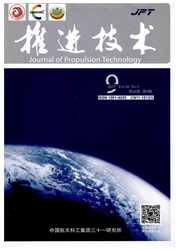

 中文摘要:
中文摘要:
High-energy pulsed laser radiation may be the most feasible means to mitigate the threat of collision of a space station or other valuable space assets with orbital debris in the size range of 1–10 cm. Under laser irradiation, part of the debris material is ablated and provides an impulse to the debris particle. Proper direction of the impulse vector either deflects the object trajectory or forces the debris on a trajectory through the upper atmosphere, where it burns up. Most research concentrates on ground-based laser systems but pays little attention to space-based laser systems.There are drawbacks of a ground-based laser system in cleaning space debris. Therefore the placement of a laser system in space is proposed and investigated. Under assumed conditions,the elimination process of space debris is analyzed. Several factors such as laser repetition frequency, relative movement between the laser and debris, and inclination of debris particles which may exercise influence to the elimination effects are discussed. A project of a space-based laser system is proposed according to the numerical results of a computer study. The proposed laser system can eliminate debris of 1–10 cm and succeed in protecting a space station.
 英文摘要:
英文摘要:
High-energy pulsed laser radiation may be the most feasible means to mitigate the threat of collision of a space station or other valuable space assets with orbital debris in the size range of 1–10 cm. Under laser irradiation, part of the debris material is ablated and provides an impulse to the debris particle. Proper direction of the impulse vector either deflects the object trajectory or forces the debris on a trajectory through the upper atmosphere, where it burns up. Most research concentrates on ground-based laser systems but pays little attention to space-based laser systems.There are drawbacks of a ground-based laser system in cleaning space debris. Therefore the placement of a laser system in space is proposed and investigated. Under assumed conditions,the elimination process of space debris is analyzed. Several factors such as laser repetition frequency, relative movement between the laser and debris, and inclination of debris particles which may exercise influence to the elimination effects are discussed. A project of a space-based laser system is proposed according to the numerical results of a computer study. The proposed laser system can eliminate debris of 1–10 cm and succeed in protecting a space station.
 同期刊论文项目
同期刊论文项目
 同项目期刊论文
同项目期刊论文
 期刊信息
期刊信息
